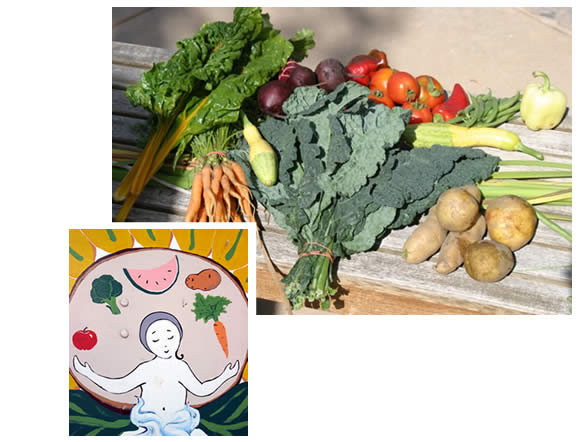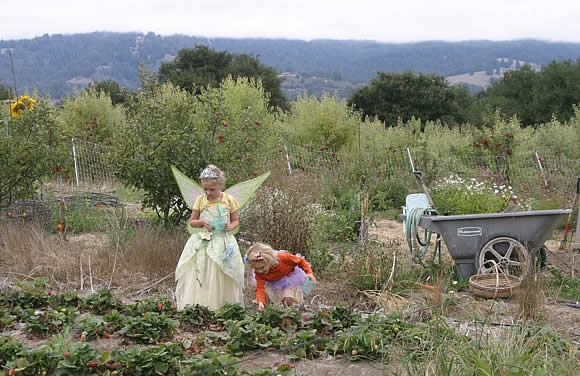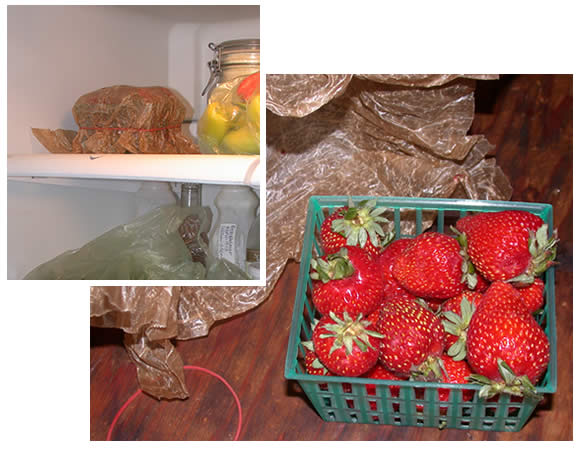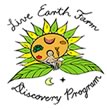What's in the box this week~~~~~~~~~~~~~~~~~~~~~~~~~~~~~~~~~~~~~~~~~~~~~~~~
Content differences between Family and
Small shares are in red; items with a
"+" in one size share are more in quantity than in the other. For any items
not from our farm, we will identify the source in parentheses. Occasionally content will differ
from this list (typically we make a substitution), but we do our best to
give you an accurate projection.
Family Share
Apples (Gala)
Basil
Beets
Carrots
Chard
Collards
Dry-farmed tomatoes +
Eggplant
Green beans
Head lettuce (red baby romaine)
Bagged lettuce (salad mix)
Red onions (Pinnacle Farm) +
Spinach
Summer squash
Sweet peppers
Strawberries
Small Share
Apples (Gala)
Basil
Carrots
Dry-farmed tomatoes
Kale (Lacinato)
Lettuce (salad mix)
Red onions (Pinnacle Farm)
Spinach
Summer squash
Sweet peppers
Strawberries
Extra Fruit
Apples (Gala)
Raspberries
Strawberries
please go by what's listed next to your name on the checklist. Sometimes there are last-minute changes - thanks!
Bread Option
This week's bread will be sesame whole wheat
|
Your Share: A box full of stories
~~~~~~~~~~~~~~~~~~~~~~~~~~~~~~~~~~~~~~~~~~~~~~~~ The Season is in it's 26th week... it's hard to believe. Writing the newsletter is a good way for me to reflect and keep track of the many activities and events going on from week to week. Sometimes it even becomes a useful record for comparing conditions and progressions of how crops grow from one season to the next. [All our weekly newsletters, going back to our 2001 season, are on our website - Debbie] To regular readers of our newsletter I probably sound repetitive, describing life on the farm, but to us who work here we get excited observing the small and subtle changes that occur from week to week. It is what makes each season so unique. The harvest plan, which is never static but continuously updated, is probably one of the best reflections of the weekly and daily dynamics on the farm. It helps translate the reality in the field into a tangible share of what's freshest and ripest at the moment. Composing a representative weekly share of all the different crops growing on the farm is a challenging but exciting orchestration, not unlike the 'juggling of produce' represented by the genie in our farm logo.  Sometimes it's tricky to estimate the size of a harvest to meet the projected content going into the shares. Every day we are continuously figuring things out and adjusting while in the field. How many beets or carrots to a bunch? Will Monday's raspberry harvest, which has steadily been increasing, yield enough for the extra fruit share to get two, instead of one basket? The basil is showing small flower heads... should we pinch off the tops and save them for the shares, or hold off and wait until the new side shoots are long enough to bunch? Sometimes I am faced with the choice of whether or not to include a crop that has struggled and failed to grow to its full potential for one reason or another. Sometimes it's the weather, which is mother nature's doing. Or it could be our doing, if we missed the timing for planting, weeding, or watering a particular crop. One good example right now is the current lack of green beans, a regular crop for us. Not only did we fall behind in our weekly planting schedule, but we didn't think of the potential impact that the cucumber beetles, in an adjacent squash crop, would have on freshly germinating bean seedlings. Both events delayed the maturity and reduced the yield of that particular succession of green beans. Hence, no green beans until next week. Every crop has a story to tell, from seed, to harvest, all the way to a nourishing meal on your plate. Some stories will include descriptions of events already forgotten, such as a heat wave, a freeze, too much rain, or not enough. Some crops through their flavors and textures will speak of the micro climate and the soils they have been growing in. Others will show battle marks from pests or diseases that affected their life cycle. Here are a few interesting stories from the crops in this week's share: The tomatoes, which are so abundant right now, were not that long ago just these little seedlings battling our cold, wet spring, and in danger of suffering an early end from a disease called 'late blight'. Where are the eggplants this year? These heat lovers and cousins to the tomatoes shivered pretty much all summer, not willing to bloom or develop any fruit. Only recently were we able to harvest a few of them, but not enough to put into all the shares. I expect only a teaser amount to make it into the shares this season. The peppers, both hot and sweet, are making a remarkable effort to grow fruit despite the lack of warm weather, the intense weed competition, and heavy soils which never allowed the plants and fruit to size up properly. Our summer squash has been a remarkably faithful producer, even though it has had to grow beneath blankets to stay warm during this cool summer; and after almost losing a battle with the voracious cucumber beetles, the last planting of the season looks nice. The carrots have almost outgrown the patch where they have lived the last 4 months. They are now so big and heavy, they can't be bunched; the tops break off as we try to tie them together. That's why you've been getting them bagged. With carrots I always love experiencing the change in flavors and textures, from the tender crisp and slightly sweet young ones, to the crunchy texture and mild earth flavor when they've reached full size. This week's spinach has almost disappeared amidst a lush stand of amaranth weeds, but still worth the search. A few amaranth leaves may show up in your spinach, but don't worry, the two "crops" are related. Young amaranth, especially in the spring, is a tasty treat, enjoyed cooked or raw. And by now you all know this year's strawberries, although incredibly flavorful, have been developing insidious soft spots (nearly undetectable when first picked) which quickly rot the fruit and render them inedible in a couple of days. The problem is caused by piecing and chewing insects such as yellow jackets, bees, and cucumber beetles, which at this time of year have a very limited food supply and so are particularly attracted to our sweet and juicy strawberries. We pick them the morning of delivery, so you get them as fresh as possible. I recommend you sort through and refrigerate them right away, and consume ASAP. I'll ask Debbie to repeat her 'strawberry handling' instructions in the recipe section. . . . . . . . . Tuesday of this week is the first day of Fall, the Fall equinox. This year it was the barn swallows which reminded me that the days were getting shorter. We had two healthy pairs of adults nesting by our house (Debbie included a picture of one brood a few weeks back). Both raised two broods of young. For a while it was really busy; the birds have an unsurpassed aerial maneuverability... they swoop, dive, glide and turn at incredible speeds. They are wonderful birds to watch, and best of all they catch a large number of annoying insects -- especially mosquitoes. Yet merely a week or two ago I was out in the yard and suddenly noticed that the swallows were gone. Somehow their internal clock already told them to head south. I hope it's not a sign that the rainy season is soon to be upon us. Happy Fall Equinox to all of you!! - Tom  |
Cute pic of the week
~~~~~~~~~~~~~~~~~~~~~~~~~~~~~~~~~~~~~~~~~~~~~~~~
Couldn't help but include this shot...
Farmer Tom's daughter Elisa's friends,
Izzy and and Ruby, in
full fairy costume (it was Elisa's birthday), out picking strawberries.

|
Friend, farmer and mentor involved in tragic accident - please help if you can
~~~~~~~~~~~~~~~~~~~~~~~~~~~~~~~~~~~~~~~~~~~~~~~~ Ken Kimes, who I have known from the first days we started Live Earth Farm, recently lost his right arm in a tragic farming accident. Ken, together with his wife Sandra, own New Natives sprout farm, which is only a few miles away from us. Many of you probably have heard their names, bought their products and or tasted their wonderful sprouts or micro-greens when we have put them in our Winter or Spring shares. I remember their involvement in one of the first local CSAs in the mid 1990's, and for years we have been neighbors selling next to each other at the Downtown Santa Cruz Farmer's Market. Ken has dedicated his life to supporting and mentoring fellow farmers, and is an inspiration to everyone in the sustainable farming community. He needs our help! There are two ways you can help. You can attend a benefit in Santa Cruz on Oct 1st (see flyer below), or make a direct donation to a medical fund which has been set up at Santa Cruz Community Credit Union in his name. To send a donation, please make a check out to "Ken Kimes Medical Fund" and mail it to: SCCCU, PO Box 1877, Santa Cruz, CA 95061.
Thank you - Tom
[click on image to download pdf]

|
Winter and Next Season... signup time coming soon!
~~~~~~~~~~~~~~~~~~~~~~~~~~~~~~~~~~~~~~~~~~~~~~~~
As my dad would say, "Tempus Fugits!" People have already begun asking me about when they can sign up for a Winter Share, and how to sign up for next spring, so I wanted to give everyone an update.
You may have noticed that our website currently only has pricing and information for this season (and last year's winter season); Tom and I have been working on the upcoming seasons' structure and plan on and off for the last several weeks, and now it is my job to put everything together into a cohesive whole, update the website, get the new signup wizards ready to go... and then notify you all! ;-)
If the time gods smile favorably upon me, the plan is to have everything ready so you can begin signing up next month (October) for both seasons. I will send out an email announcement to all CSA members, as well as mention it again here in the newsletter.
Here are some highlights of the coming seasons:
Winter Season changes
<> 10 weeks instead of 8 - we're not going to do the 'every other week' thing like in past years; it will still be the 3 weeks between Thanksgiving and Christmas, then 3 weeks off for Christmas and New Year's, but starting in January we'll go 7 more weeks in a row, ending the last week of February. Then there will be a between-season break for the month of March, and the 2011 Regular Season will start in April.
<> 2 sizes of Winter Share - because it will be every week, Tom has decided to offer two share sizes, so we'll have a "Family" and "Small" share for Winter as well!
2011 Regular Season changes
<> Discounts - we will be offering payment discounts for Early Registration and One Payment.
<> Budget Share - new! Tom wants to offer a third share size, something much smaller and more economical for families who are struggling in this economy, but still want to feed their children fresh, healthy, organic produce. He will talk about this in greater detail in a future newsletter.
<> Installment Payments - new! Another feature for tough times, this will allow you to spread your payments out over more months so that they are proportionally smaller and easier to budget. Tom will talk more about this one too.
- Debbie
|
Notes from Debbie's Kitchen~~~~~~~~~~~~~~~~~~~~~~~~~~~~~~~~~~~~~~~~~~~~~~~~
Hi everyone, I'm back 'in the kitchen' ;-) (Although I was on the farm last Tuesday, newsletters go out Mondays, so that's why I was 'away' 2 weeks!) I will indeed talk about strawberry handling per Tom's request. Eggplant fiend that I am, I am of course saddened to hear they will be in limited supply this year, but the tomatoes have been absolutely stunning, so I console myself with them! We've been getting plenty of sweet peppers too, and so this week I am including a recipe for stuffed peppers sent in by member Roopa Guttal. Her son eagerly created a you-tube video of the process, which I'll include (of course!). Enjoy! - DebbieHow to handle/store your strawberries to make them lastThe strawberries this year have been sweeter than ever, and I personally wonder if that doesn't have something to do with why the piercing insects are after them more than I can remember from any prior season. Humans aren't the only ones with a sweet tooth! Here is the technique I have used with consistent success for years now. When you get your berries home -- especially if you're getting multiple baskets of them -- empty them all out onto a cutting board or tabletop. Do NOT rinse them - that will just accelerate rot. I don't rinse them at all, actually, unless I see visible dirt on them. But if you feel you need to rinse them, wait to do so until just before eating, so they don't sit wet. Re-pack the berries into their baskets, sorting and putting the least ripe berries in one basket (or on the bottom, if you only have one basket), and then working your way up to the more ripe berries. Separate out and compost any berries that may have gone bad, as if you leave them in the basket with with good berries, they can quickly take down any adjoining berries if they go moldy. Any that are really ripe, or have small soft spots from the piercing insects, you should eat on the spot. If the soft spots are bigger, you can cut them out and the flavor of the rest of the berry is unaffected (as opposed to if a berry has a moldy part, which will make the whole berry taste moldy). Cover the baskets of berries with a piece of waxed paper and secure with a rubber band (I save and re-use my waxed paper squares for months; you don't need to use a new piece each time). Don't use plastic wrap; the berries need to breathe a little, and the waxed paper seems to be just right. Store the re-packed berries in your refrigerator, with the least ripe baskets in the back, so that you use the more ripe ones first. The less ripe ones will actually ripen slowly in the fridge. When stored this way, I can usually make the berries last so that that that 'least ripe' basket is still good by the end of a week! Below is a picture of the berries on the top shelf of my fridge from last Thursday, and uncovered showing how still fresh they still are!  Mulgai (Curried stuffed sweet peppers) Mulgai (Curried stuffed sweet peppers)by Roopa Guttal 15-18 small bell peppers 1 large onion finely chopped 1/2 bunch of fresh coriander (cilantro) finely chopped 2 tsp. of kala masala/curry masala (made from many spices such as cinnamon, black pepper corns, cloves, onion flakes, garlic flakes, coconut powder, cumin seeds, cilantro seeds red chilies; can be found in Indian grocery stores)* 1 1/2 tsp. salt 1 tsp turmeric powder 2 1/2 tbsp. olive oil, divided 1 tsp. tamarind paste 1 tsp. brown sugar 2 tbsp. almond powder* 3 tbsp. coarsely powdered roasted peanuts 2 cloves garlic, minced Slit the peppers partway into quarters, leaving the vegetable together at the stalk. Remove the seeds using a small spoon, being careful not to break the whole vegetable apart. Mix the finely cut onions, kala masala, turmeric powder, salt and 1/2 tbsp. of oil. When the onion is all smeared with the oil and masala paste, let it stand for couple minutes. Add the tamarind paste, brown sugar, almost all of the chopped coriander (saving 1/4 cup for garnish), almond powder and roasted peanut powder to the onion mixture. If mixture is dry, add few spoonfuls of water, to allow the masala and vegetables to mix well. Carefully fill the split peppers with the onion mixture, using a small spoon. Heat the remaining olive oil in a flat pan. Add minced garlic to the oil and let it brown a little. Place the stuffed peppers carefully on the heated pan. Cover the pan and let it cook for 5 minutes. Open the lid and turn each of the peppers over carefully. Notice the skin is slightly roasted and the bell pepper is becoming soft. Cover the pan again and cook for 7 to 8 minutes more, until the peppers are cooked right (roasted and soft, but not mushy) Garnish with the remaining cilantro and serve. 'Mulgai' is ready to eat with warm roti or corn tortillas. Here is a youtube video of Roopa preparing this recipe, lovingly created by her son, Akshay Alaghatta. * I asked Roopa about the powdered nuts, and if she made her own masala, because both of these things are not common in typical American kitchens; she replied, "Most
masalas have the common ingredients of corriander seeds, fenugreek,
cinnamon, cloves, black pepper, dry coconut and Chilli powder, however
the home made one is better quality. Sambar masala or garam masala
sold in grocery stores can be used as well." Regarding the almond powder, she said she makes it at home using her Osterizer (blender), and that almond paste is a good substitute. |
|
2010 CALENDAR
~~~~~~~~~~~~~~~~~~~~~~~~~~~~~~~~~~~~~~~~~~~~~~~~
Visit our website's calendar page for more details, including photos and videos of past events. This is a great way to get the flavor of what it is like visiting the farm!
Live Earth Farm Discovery Program for WEE ONES
3rd Tuesday of every month, 10:30am - Noon [year-round]
(free for children 0 - 3 yrs; $10 - $15 per adult)
 Mothers, fathers, grandparents, caretakers of any kind... bring the babe in your arms to experience the diversity of our beautiful organic farm here in Watsonville. We will use our five senses to get to know the natural world around us. The farm is home to over 50 different fruits and vegetables, chicks, chickens, goats, piglets, and the many wild members of the Pajaro watershed. Mothers, fathers, grandparents, caretakers of any kind... bring the babe in your arms to experience the diversity of our beautiful organic farm here in Watsonville. We will use our five senses to get to know the natural world around us. The farm is home to over 50 different fruits and vegetables, chicks, chickens, goats, piglets, and the many wild members of the Pajaro watershed.
For more information, contact Jessica at the LEFDP office: (831) 728-2032 or email her at lefeducation@baymoon.com.

Happy Girl Kitchen's 2010 Workshop Schedule at LEF
(all workshops are from 10am to 3pm and include an organic lunch, as well as take-home items from what is made that day!)
March 6 (Saturday) - Fermentation (sauerkraut, kimchee and kombucha)
April 10 (Saturday) - Cheese and kefir
June 6 (Sunday) - Cherries and Spring Berries
July 10 (Saturday) - Apricots, Strawberries and Blackberries
September 11 (Saturday) - Heirloom tomatoes JUST ADDED!
September 12 (Sunday) - Heirloom tomatoes SOLD OUT
October 2 (Saturday) - Pickles
Contact Jordan if you have any questions
jordan@happygirlkitchen.com
http://www.happygirlkitchen.com
Community Farm Days and Events Schedule
(All Community Farm Days are Saturdays unless otherwise noted.)
March 20 - Sheep to Shawl
May 29 - Three sisters planting in the field! Help sow pumpkins, corn, and beans (update 5/24: see Event Schedule in Week 9 newsletter)
June 19 - Summer Solstice Celebration and Strawberry U-pick
July 3 - Apricot and Strawberry U-pick CANCELLED.
July 12 thru 16 - Summer Celebration Art on the Farm Day Camp!
Aug 28 - Totally tomatoes. From farm to fork, cooking with tomatoes and making farm-fresh cheese. Also U-pick raspberry and tomato day!
Sept 25 - LEFDP Second Annual Fundraiser (see below)
Oct 23 - Harvest Celebration and Apple U-pick
LEFDP Second Annual Fundraiser - "Taste of the Fields"
Wine, Hors d'oeuvres, and silent auction on the farm
Saturday September 25th, 3 - 6pm
featuring...
some awesome
local chefs:
· The Butcher, The Baker, The Wedding Cake Maker
· Happy Girl Kitchen Co
· Cafe Ella
· Vibrant Foods (Rebecca Mastoris and
Karen Haralson)
some great
wine:
· Storrs Winery
· Alfaro
Family Vineyards & Winery
· Chronic
Cellars
· Peachy Canyon Winery
· Savannah Chanelle Vineyards
and some beautiful
art and music:
· Ashley Lloyd
· Groove
Grass
· Josh Kimball Photography
Tickets are not available at the door and space is limited, so please get your tickets today! All proceeds benefit the Live Earth Farm Discovery Program 501(c)(3)
To order tickets, contact LEFDP at 831-728-2032, lefeducation@baymoon.com
Medicinal Herb Walk on the farm
Hidden in amongst the veges, lurking below the fruit trees, at home in
the oak woodlands, and planted in the hedgerows, Live Earth Farm is
chock-full of medicinal plants. With literally hundreds of plants
useful for treating common maladies and maintaining vital health, Live
Earth Farm is an incredible place to go for an herbal adventure. Come
join herbalist Darren Huckle L.Ac for a fun, informative, and applicable
tour. We will identify, taste and learn how to safely and effectively
use medicinal plants common in Northern California. This is a stand
alone class or a great entry to the monthly herbal series being planned
for the 2011 season. Bring a sun hat, water bottle, notebook and your
questions for this fun filled class.
When: Saturday October 9
Time: 10:30 am - 3 pm
Cost: $45 per person
To RSVP or for more information contact Darren Huckle at rootsofwellness@gmail.com or 831.334.5177
In the spring of 2011, Darren will be teaching a series on identifying, preparing, and using herbal medicines. Feel free to contact Darren for details.
|
|